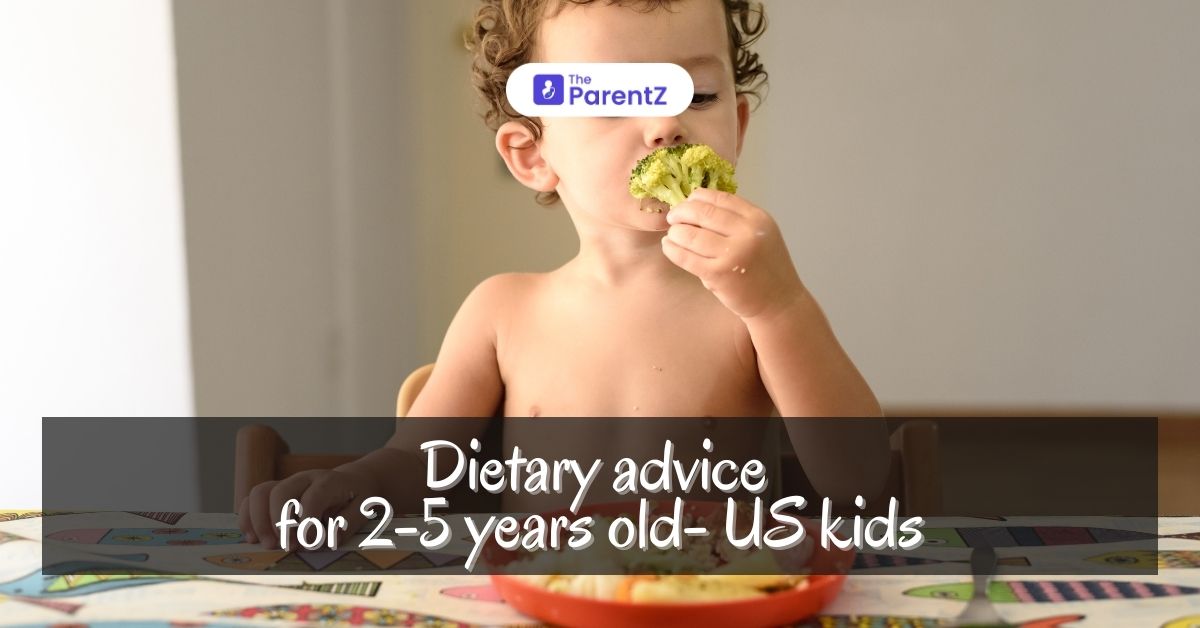The early childhood years, from ages 2 to 5, are a rapid growth and development period. During this critical time, proper nutrition is vital in ensuring that children achieve their full potential regarding physical health, cognitive abilities, and emotional well-being.
The American Academy of Pediatrics (AAP) offers detailed recommendations to support young children’s optimal health and development. These guidelines underline the importance of a varied diet, appropriate portion sizes, nutrient-dense foods, and healthy eating habits. By instilling these habits early on, we can pave the way for a lifetime of wellness.
The AAP highlights explicitly several fundamental principles in their dietary guidelines for young children:
Key Nutritional Needs
Energy Requirements
- Children aged 2 to 3 years Typically need about 1,000 to 1,400 calories per day, depending on their activity level.
- Children aged 4 to 5 years: Require between 1,200 to 1,600 calories daily.
Macronutrients
- Carbohydrates: Should constitute 45-65% of total caloric intake. Focus on complex carbohydrates such as whole grains, fruits, and vegetables while minimising refined sugars.
- Proteins: Essential for growth and development. Recommended intake is 5-20% of total calories for 2 to 3-year-olds and 10-30% for 4 to 5-year-olds. Sources include lean meats, poultry, fish, beans, peas, and nuts.
- Fats: Healthy fats should make up 30-40% of total caloric intake for children aged 1 to 3 and 25-35% for those aged 4 to 5. Sources include avocados, nuts, seeds, and olive oil while minimising trans fats and saturated fats.
Essential Vitamins and Minerals
Calcium
- Importance: Critical for bone development.
- Requirements: 700 milligrams per day for children aged 1 to 3 years and 1,000 milligrams for those aged 4 to 5 years.
- Sources: Dairy products, fortified plant-based milk, leafy greens, and tofu.
Iron
- Importance: Supports cognitive development and prevents anaemia.
- Requirements: 7 milligrams per day for children aged 2 to 5 years.
- Sources: Meats, beans, fortified cereals, spinach, and lentils.
Vitamin D
- Importance: Necessary for bone health and calcium absorption.
- Requirements: 600 IU per day.
- Sources: Fortified dairy products, fatty fish (like salmon and mackerel), and adequate sunlight exposure.
Fibre
- Importance: Promotes digestive health and prevents constipation.
- Requirements: 19 grams per day for 2 to 3-year-olds and 25 grams for 4 to 5-year-olds.
- Sources: Fruits, vegetables, whole grains, and legumes.
Creating a Balanced Plate
The AAP advocates for using the MyPlate model, which provides a visual guide to creating balanced meals:
- Fruits and Vegetables: Half the child’s plate should be filled with fruits and vegetables. Encourage a variety of colours and types to ensure a range of nutrients. Fresh, frozen, and canned (without added sugars) options are all viable.
- Grains: One-quarter of the plate should consist of grains, focusing on whole grains like brown rice, whole wheat bread, and oatmeal.
- Protein: The remaining quarter should include protein sources. Rotate between different types of proteins to provide a broad spectrum of nutrients.
- Dairy: Include dairy with each meal, such as a glass of milk, a serving of yoghurt, or a slice of cheese.
Encouraging Healthy Eating Habits
Regular Meal and Snack Times
Establishing regular eating schedules helps children develop a routine and prevents overeating. Three main meals and two to three healthy snacks per day are ideal.
Portion Sizes
Serve age-appropriate portion sizes to avoid overeating. A good rule of thumb for young children is one tablespoon of each type of food per day.
Hydration
Ensure children drink plenty of water throughout the day. Limit sugary drinks and juices to avoid excess sugar intake.
Addressing Picky Eating
Picky eating is every day in young children. The AAP recommends:
- Repeated Exposure: Introduce new foods multiple times in various ways without pressuring the child.
- Role Modelling: Children are more likely to try new foods if they see their parents and caregivers eating them.
- Involvement in Meal Preparation: Engage children in shopping and preparing meals to increase their interest in trying new foods.
- Positive Environment: Create a stress-free mealtime environment and avoid using food as a reward or punishment.
Diet Plan
| Meal | Food Option | Nutritional Benefits |
| Breakfast | Oatmeal with Fruit: Whole grain oats cooked with milk or water, topped with fresh berries, a drizzle of honey (for children over one year), and a sprinkle of chia seeds. | Oats provide fiber and sustained energy, berries are rich in antioxidants and vitamins, and chia seeds add healthy omega-3 fatty acids. |
| Scrambled Eggs with Whole Grain Toast: Scrambled eggs cooked with a small amount of olive oil or butter, served with whole grain toast and a side of sliced tomatoes or avocado. | Eggs are an excellent source of protein and choline, whole grain toast provides fiber, and tomatoes or avocado add vitamins and healthy fats. | |
| Yogurt Parfait: Low-fat plain yogurt layered with granola and sliced bananas or strawberries. | Yogurt offers probiotics and calcium, granola provides fiber and crunch, and fruits add natural sweetness and essential vitamins. | |
| Smoothie: A blend of spinach, frozen berries, banana, Greek yogurt, and a splash of milk or a milk alternative. | This smoothie is packed with vitamins, minerals, and protein, making it a nutrient-dense start to the day. | |
| Mid-Morning | Apple Slices with Peanut Butter: Fresh apple slices served with a small amount of peanut butter for dipping. | Apples are high in fiber and vitamins, while peanut butter adds protein and healthy fats. |
| Cheese and Whole Grain Crackers: A serving of cheese paired with whole grain crackers. | Cheese provides calcium and protein, and whole grain crackers contribute additional fiber. | |
| Veggie Sticks with Hummus: Carrot sticks, cucumber slices, and bell pepper strips served with hummus. | Vegetables are rich in vitamins and fiber, and hummus offers plant-based protein and healthy fats. | |
| Lunch | Chicken and Avocado Wrap: Whole grain tortilla filled with sliced chicken, avocado, spinach, and a smear of hummus. | Chicken is a lean protein, avocado provides healthy fats, spinach is rich in vitamins, and hummus adds flavor and additional protein. |
| Pasta with Vegetables: Whole grain pasta tossed with a variety of steamed vegetables (e.g., broccoli, carrots, peas) and a light tomato sauce or olive oil. | Whole grain pasta provides complex carbohydrates and fiber, while vegetables contribute essential vitamins and minerals. | |
| Chicken and Vegetable Stir-Fry: Chicken breast pieces stir-fried with colorful vegetables (e.g., bell peppers, snap peas, carrots) and served over brown rice or quinoa. | This dish offers lean protein, a variety of vitamins from the vegetables, and fiber from the brown rice or quinoa. | |
| Bean and Cheese Quesadilla: Whole grain tortilla filled with black beans and shredded cheese, served with a side of salsa and a small salad. | Black beans are a great source of plant-based protein and fiber, and cheese provides calcium and protein. | |
| Evening Snack | Mixed Nuts and Dried Fruit: A small handful of mixed nuts (e.g., almonds, walnuts) and dried fruit (e.g., raisins, apricots). | Nuts offer healthy fats, protein, and fiber, while dried fruit provides vitamins and natural sweetness. |
| Fruit and Yogurt Dip: Fresh fruit slices (e.g., apple, pear, mango) served with a yogurt-based dip. | Fruits are rich in vitamins and fiber, and yogurt adds probiotics and calcium. | |
| Dinner | Grilled Salmon with Quinoa and Steamed Broccoli: A small portion of grilled salmon served with cooked quinoa and steamed broccoli. | Salmon is rich in omega-3 fatty acids, quinoa offers complete protein and fiber, and broccoli provides vitamins and minerals. |
| Vegetable Soup with Whole Grain Bread: A hearty vegetable soup made with beans, carrots, celery, and tomatoes, served with a slice of whole grain bread. | This meal is packed with vitamins, fiber, and protein, offering a balanced and satisfying dinner. |








Be the first one to comment on this story.